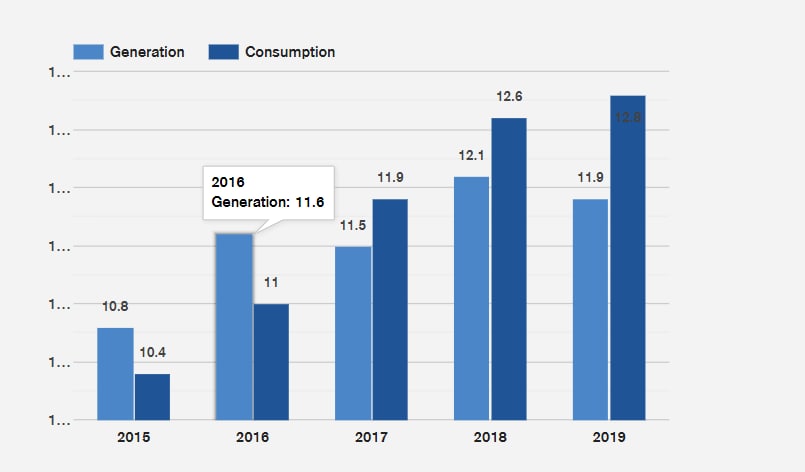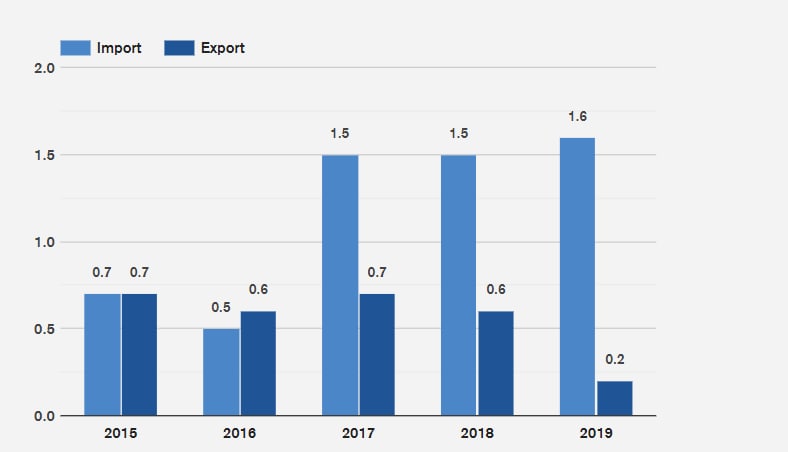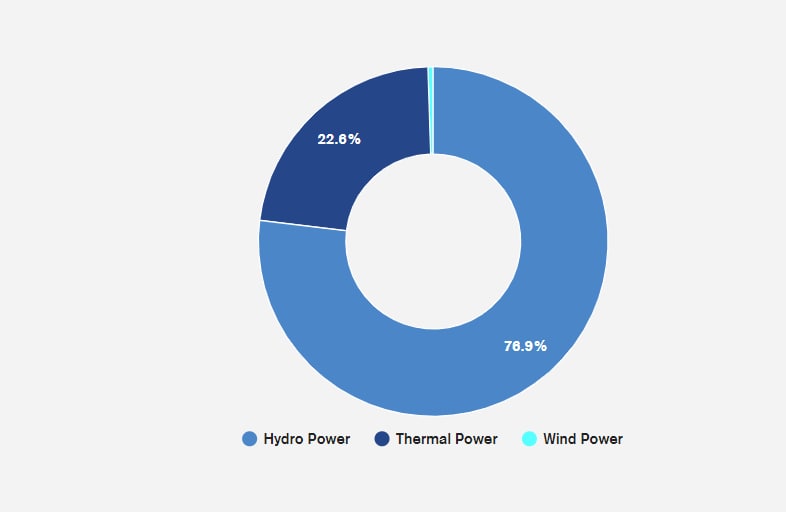Energy
Focusing on the electricity market, in 2017 Georgia had an 8 percent growth in total consumption (reaching 11,876 million. kWh), with a minor decrease in total generation (reaching 11,531 million kWh).
And Over the last decade, electricity consumption has grown largely in line with real GDP growth rate and reached 12.6 TWh in 2018.
As consumption continues to rise not only in Georgia but in neighboring countries as well, there is a great opportunity to develop new power plants to keep up with this ever-increasing demand.
Seasonality in electricity generation remains one of the key challenges for the market.
In contrast, most of Georgia’s electricity exports (in 2017 Georgia exported 686 million kWh) go to Turkey, Armenia and Russia.
Interestingly, since February 2016, Georgia started playing an active role as a regional electricity hub, transiting electricity from Azerbaijan to Turkey, Russia to Armenia and Russia to Turkey. In 2017 Georgia transited (254 million Kwh) less than a third of 2016’s transit capacity (850 million kWh).
According to estimates, currently, only about 25% of Georgia’s potential is exploited. Therefore, there is a lot of untapped potentials, mostly from hydro resources, but also from wind, solar, geothermal, and biomass sources as well.
Specifically, due to a large amount of hydro generation (79 percent of total supply in 2017), and higher electricity demand in winter months, every year there is a gap between generation and consumption from September to April.
Why Invest in Energy
Why Invest in Energy
Valued at around $7 trillion globally, energy is the most valuable market segment on earth. Delivery of usable forms of energy to the world’s seven billion people is responsible for 10% of the world’s annual gross domestic product.
A look at the ten worldwide companies that earn the highest annual revenue reveals that nine out of ten of them operate in the energy industry. That’s because energy is so pervasive. It’s required for every human endeavor. Because energy generates more revenue than any other industry, it is a prime place to stash your investment dollars.

Liberalized and deregulated market
Starting from 2008 Georgia has liberalized and deregulated energy market. All new renewable projects are based on Build-Own-Operate (BOO) principle. Investor is free to choose buyer on open market and negotiate price. No fee is required for the connection to transmission grid. No license is required for export and new HPPs have priority access to the capacity on the new interconnection to Turkey. Generation and export activities are exempted from VAT tax. All HPPs that smaller than 13 MW do not require generation license and HPPs smaller than 2 MW do not require environmental impact assessment either.
Georgia is member of The Energy Community, which means Georgian internal energy market rules and principles will in line with the EU market rules, leading to an integrated pan-European energy market


Perfect Export opportunity
Georgia is surrounded by countries that either have higher electricity generation cost or electricity deficit. With abundance of high mountains and fast-flowing rivers, Georgia has competitive advantage over neighbors in terms of generation cost. Most attractive export market is Turkey, which is one of the top countries in terms of electricity demand increase and had 2.5 TWh of import in 2018. Turkey experiences electricity shortage during summer months, while Georgia has generation surplus.
Diversity
What do you think of when energy is mentioned? Oil perhaps? Electricity? Solar power? Wind? The fact is the energy market is so big that it encompasses a diverse array of market sectors. Oil, gas, coal, and nuclear energy only scratch the surface of the industry’s offerings
Investment Opportunities in Georgia

Hydro power plant

Thermal power plant

Wind power

Solar power
Deprecated: Theme without footer.php is deprecated since version 3.0.0 with no alternative available. Please include a footer.php template in your theme. in /home/ogige/public_html/wp-includes/functions.php on line 4979
اقامت گرجستان is proudly powered by WordPress